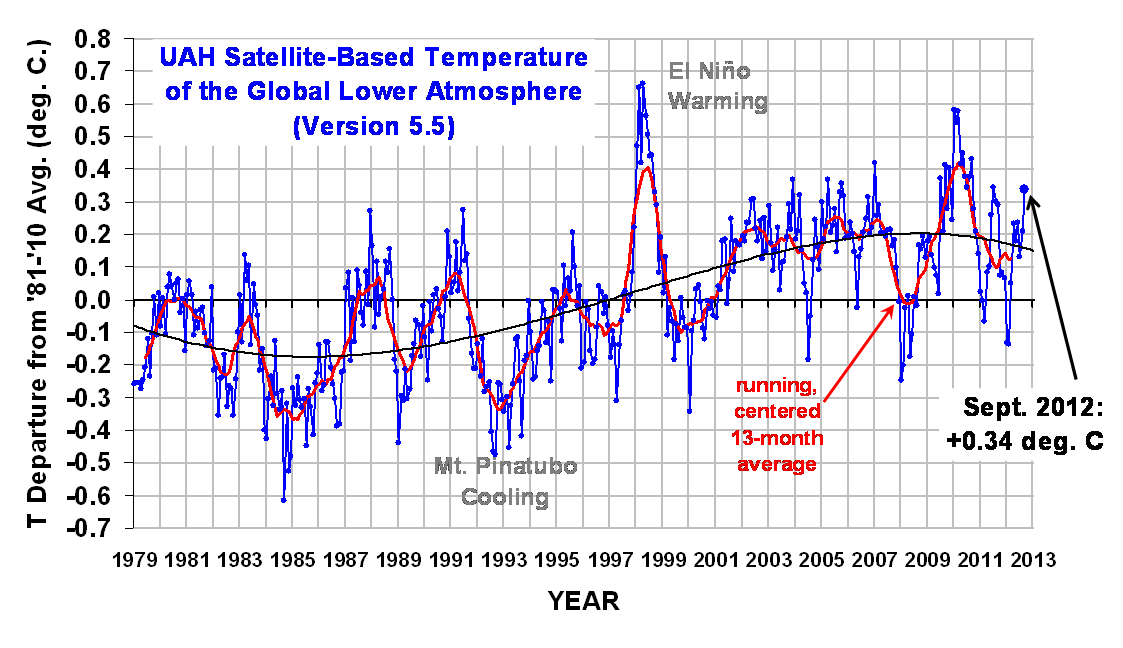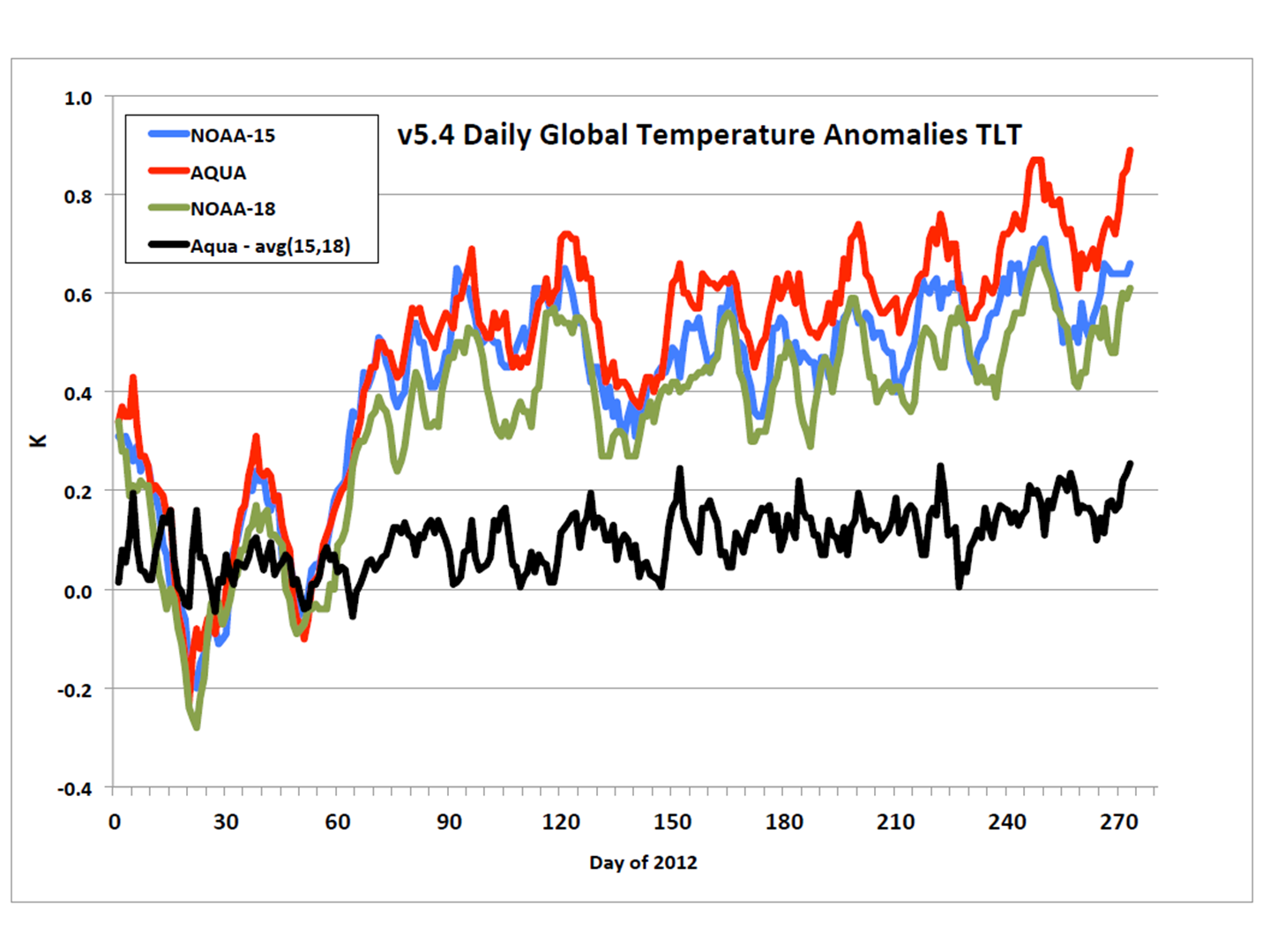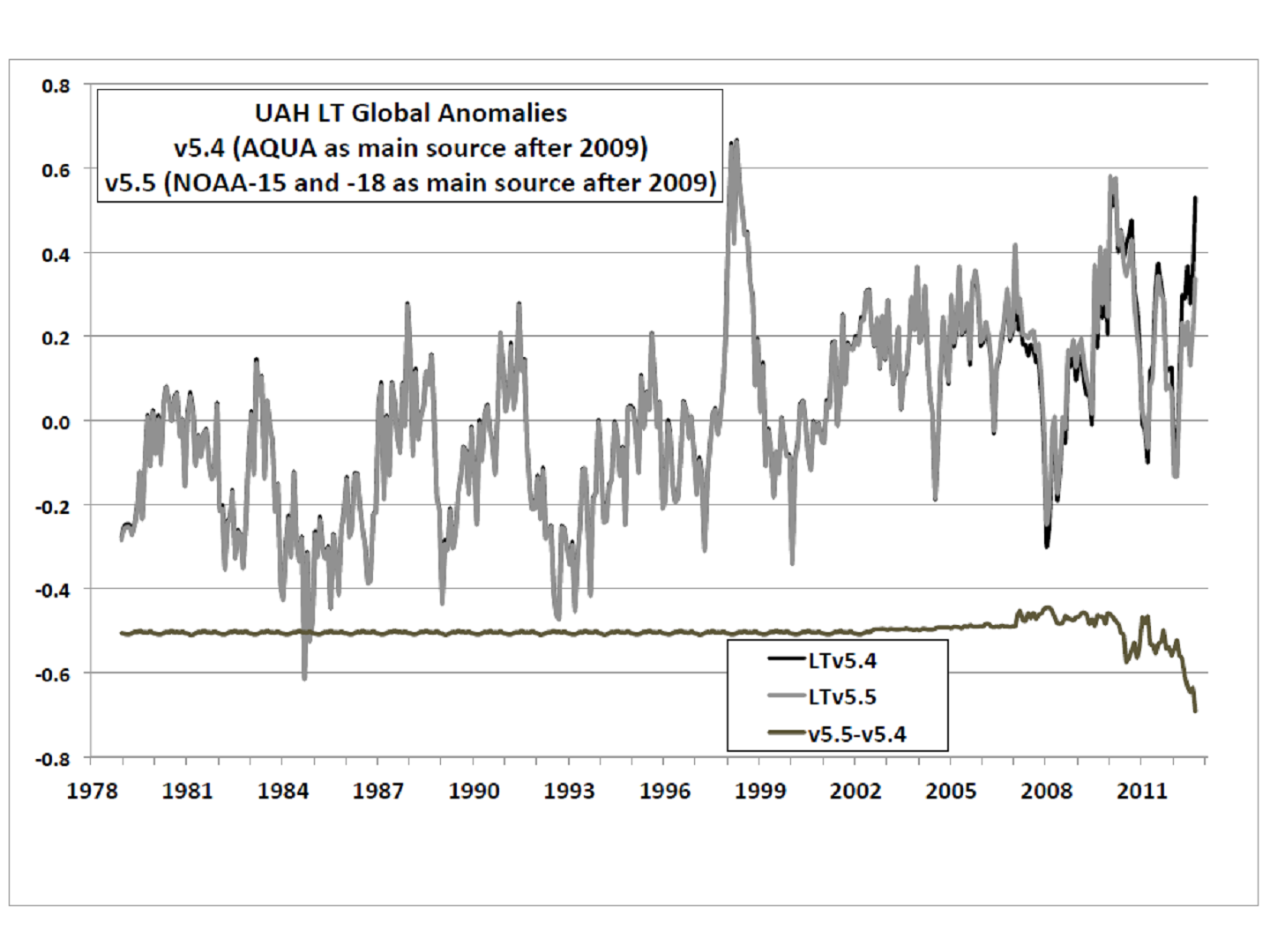As discussed in my post from yesterday, the spurious warming in Aqua AMSU channel 5 has resulted in the need for revisions to the UAH global lower tropospheric temperature (LT) product.
Rather than issuing an early release of Version 6, which has been in the works for about a year now, we decided to do something simpler: remove Aqua AMSU after a certain date, and replace it with the average of NOAA-15 and NOAA-18 AMSU data. Even though the two NOAA satellites have experienced diurnal drifts in their orbits, we have found that those drifts are in opposite directions and approximately cancel. (The drifts will be corrected for in Version 6.0).
The new interim dataset, Version 5.5, has a September, 2012 global lower tropospheric temperature anomaly of +0.34 deg. C (click for large version):

Note that the new v5.5 dataset brings our monthly anomalies over the last few years somewhat more in line with those from RSS, which have been running significantly cooler than ours. The trend change from v5.4 to v5.5, however, only decreases by 0.001 deg. C/decade. This is partly because the time series is now almost 34 years in length, and adjusting the last several months by 0.1 deg or so is not going to affect the long-term trend substantially.
Evidence of the divergence of Aqua from the two NOAA satellites during 2012 is shown in the next plot:

The global monthly differences between v5.5 and v5.4 are shown next, which reveals the rapid divergence in the last couple months of Aqua AMSU from the average of NOAA-15 1nad NOAA-18 AMSUs:

The Version 5.5 hemispheric and tropical LT anomalies from the 30-year (1981-2010) average since January 2010 are:
YR MON GLOBAL NH SH TROPICS
2010 01 0.581 0.747 0.415 0.660
2010 02 0.542 0.623 0.461 0.738
2010 03 0.577 0.721 0.434 0.665
2010 04 0.416 0.609 0.223 0.596
2010 05 0.449 0.593 0.306 0.679
2010 06 0.376 0.430 0.321 0.464
2010 07 0.343 0.455 0.232 0.303
2010 08 0.376 0.480 0.273 0.216
2010 09 0.430 0.351 0.510 0.114
2010 10 0.278 0.232 0.324 -0.053
2010 11 0.208 0.316 0.100 -0.270
2010 12 0.141 0.207 0.075 -0.441
2011 01 0.022 0.036 0.007 -0.382
2011 02 -0.003 0.005 -0.011 -0.350
2011 03 -0.066 -0.013 -0.120 -0.336
2011 04 0.083 0.132 0.034 -0.233
2011 05 0.101 0.082 0.120 -0.061
2011 06 0.260 0.292 0.229 0.183
2011 07 0.343 0.290 0.396 0.169
2011 08 0.300 0.247 0.353 0.143
2011 09 0.290 0.280 0.301 0.128
2011 10 0.073 0.140 0.006 -0.152
2011 11 0.084 0.072 0.096 -0.060
2011 12 0.066 0.119 0.012 -0.033
2012 01 -0.134 -0.060 -0.203 -0.256
2012 02 -0.135 0.018 -0.289 -0.320
2012 03 0.051 0.119 -0.017 -0.238
2012 04 0.232 0.351 0.114 -0.242
2012 05 0.179 0.337 0.021 -0.098
2012 06 0.235 0.370 0.101 -0.019
2012 07 0.130 0.256 0.003 0.142
2012 08 0.208 0.214 0.202 0.062
2012 09 0.338 0.349 0.327 0.155
Again, Version 5.5 is only meant as an interim solution until our Version 6 is ready, which has new corrections for diurnal drift and an improved calibration strategy for the old MSU instruments.
Our reluctance to make these changes sooner is partly due to the flak we get when we are accused of adjusting temperatures downward for no good reason. There is now sufficient evidence (alluded to above) to make such adjustments.

 Home/Blog
Home/Blog




Thanks in favor of sharing such a nice thinking,
paragraph is good, thats why i have read it entirely
Heya i am for the first time here. I came across this board and I find It really useful
& it helped me out much. I hope to give something back and help others like you aided me.